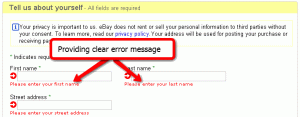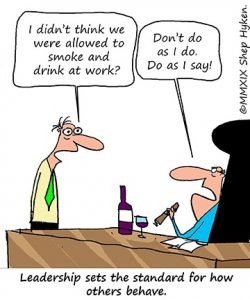Some marketers hurtle headlong into gathering leads without considering the strategic framework surrounding the effort. Contributor Sweta Patel explains how to set up a system to maximize the quality and quantity of demand generation.

Marketers are expected to focus on the bottom line, and measurement is key to accomplishing that.
A lot of startups get sloppy and charge head-first into execution without focusing on the foundations of marketing and analytics. Execution is important, but it must be built on the foundation of a solid strategy. The most efficient way to execute marketing campaigns is by setting up your goals and tracking elements first.
I remember working tirelessly (I’m talking no-sleep-till-Brooklyn style) at a startup that was executing all kinds of campaigns. From events to emails to social advertising, nothing seemed like it was generating leads. At least, not qualified leads that sales actually wanted to follow up with.
The problem was that my focus was in the wrong place. I was running like a hamster in a ball, working really hard to increase the pipeline volume for the organization. Then I realized that it wasn’t more hours, labor, or even leads that I needed. What I needed was a perspective shift and a strategy makeover.
I needed to make the switch from volume-driven to revenue-driven. I changed my mindset to focus on revenue-generating activities and measured every stage of the funnel. I set the journey to be such that the leads coming into the funnel were the ones who were ready to purchase the product (rather than every onlooker I could convince to fill out a form).

What did I have to change in order to accomplish that and meet the revenue goals for the company?
Here’s the framework I used:
Connecting the systems for successful tracking
It’s essential to set up your systems so that you’re able to measure every aspect of your marketing program. First, you must determine what your big systems are. This usually includes your CRM and marketing automation tool (Like Hubspot, Marketo or Pardot). If you decide to use an email service provider to weed out junk leads before they go into the marketing automation system, I suggest using Campaign Monitor. This will save space and reduce the mess in your marketing automation system by preventing the leads from coming in there in the first place.
Next, focus on the website and setting up the tracking code from the marketing automation tool and Google Analytics (there are also other analytics tools like Kissmetrics, Mix Panel and Heap Analytics). This will allow you to track the traffic and visitors coming from your marketing programs. You’ll also want to determine the type of traffic you are receiving from specific keywords. Moz Pro or SEMRush will allow you to track the traffic from your keywords.
Then, using a tool like Google Tag Manager will allow you to track all of your pixels for any online advertising.
You will want to ensure you are able to optimize your pages based on the keywords attracting people there, and tools like UserTesting, Optimizely and HotJar will enable you to test each page of your website to ensure your audience is meeting their goals.
The last few systems include a database tool that is connected to your CRM. This tool will allow your organization to prospect faster and/or send out cold emails. Of course, you are not able to send out cold emails from a marketing automation system or a CRM, so consider using tools like ClickBack that will allow you to send emails to purchased lists. Otherwise, you will get penalized under the CAN-SPAM act.
Here you can see a flowchart explaining how all of these systems could be brought together:

Notes on this diagram: The webinar service that comes along with social media tools (Sprout Social and Socedo) is connected to the marketing automation system. The orange-colored items may need involvement from developers for the service to be deployed. The rest can be implemented by marketing.
Building campaigns that scale for good
Now that you have all of your systems set up, it is time for you to develop the execution machine. Your pipeline goal for the year is a good place to start when creating demand generation campaigns.
I am a big believer in the idea that marketing is math. Let’s say you have a sales target of $5,000,000 and your average deal size is about $50,000. This means you should close 100 deals to meet your revenue goals. How many leads will you have to generate? Let’s say your conversion goal from Marketing Qualified Lead to Close-Won is 1.5 percent. In that case, you must generate around 6,700 leads to meet your marketing initiatives — assuming that all the deals must be sourced from marketing.

How are we going to achieve that?
Well, first we will look at our attribution numbers and determine which channels yielded the most leads in the past year. Here are some examples of channels to use: website, social media, email marketing, blog, trade shows, native advertising (Facebook, Twitter, LinkedIn and Google Adwords), webinars and industry advertising groups.
Here are some examples of channels to use:
- Website
- Social media
- Email marketing
- Blog
- Trade shows
- Native advertising (Facebook, Twitter, LinkedIn and Google AdWords)
- Webinars
- Industry advertising groups
Now, with a $670,000 budget — our cost per lead being $100 — we must achieve 6,750 marketing qualified leads.
Check out the table below to see how you can set up your campaigns for execution:
| Campaign | Cost | Est. Leads | CPL |
|---|---|---|---|
| Event | $15,000 | 150 | $100 |
| Ebook | $12,000 | 100 | $120 |
| Webinar | $2,000 | 50 | $40 |
| Content Syndication | $15,000 | 100 | $150 |
| Totals | $44,000 | 400 | $110 |
Measuring the ROI of your marketing campaigns
Now that you have your programs created, you are ready to measure the efficacy of your programs. How do you go about measuring the ROI?
Let’s start with an even spread attribution model, in which equal credit is given to all campaigns that touched the lead. This will help us understand which channels were most effective across the board in influencing deals.
When it comes to the largest influence, you find that events and email marketing paid the bills this year. Now let’s look back at the events and marketing channels to determine the campaigns with the highest conversion rates and volumes. The campaigns with the highest conversion rates include the fall conferences and the breakfast series, along with the winter e-book.
Looking at it this way helps you understand how each campaign contributed to the final deal size by measuring the conversion rates at the campaign level. You can easily do this inside of Salesforce, or you can use a tool like Domo.

Data is the asset that allows you to win big in your marketing campaigns. Learning to harness it needs to happen before, not after, you launch your campaigns. By strategizing first, executing second and measuring regularly in order to optimize, you will be the pro who takes campaigns to the next level.
Some opinions expressed in this article may be those of a guest author and not necessarily Marketing Land. Staff authors are listed here.
Marketing Land – Internet Marketing News, Strategies & Tips
(101)







